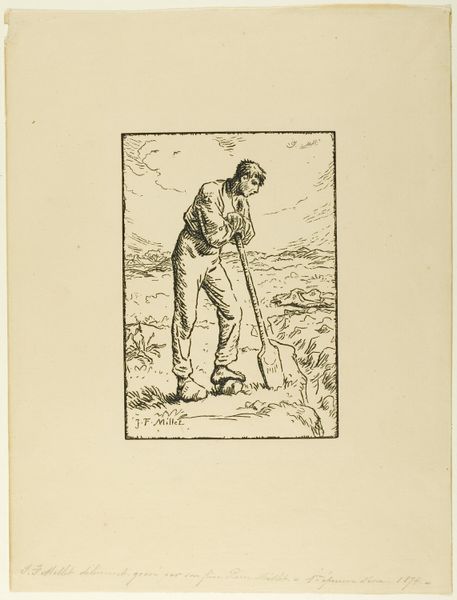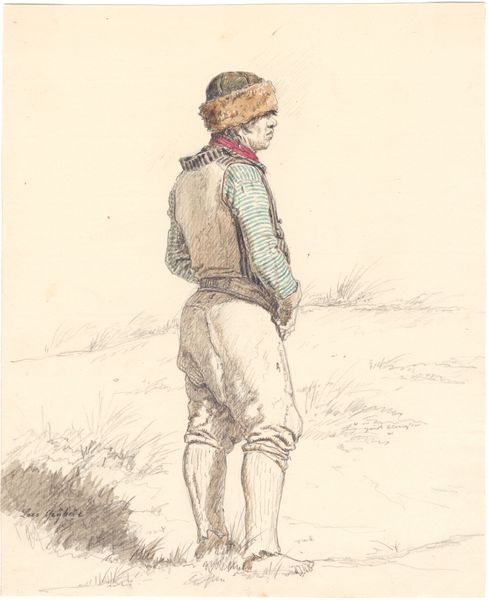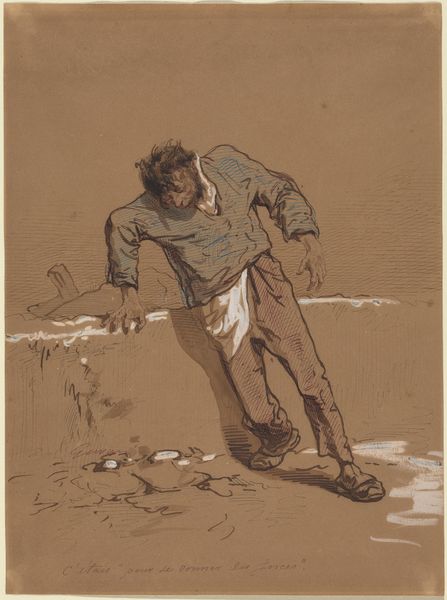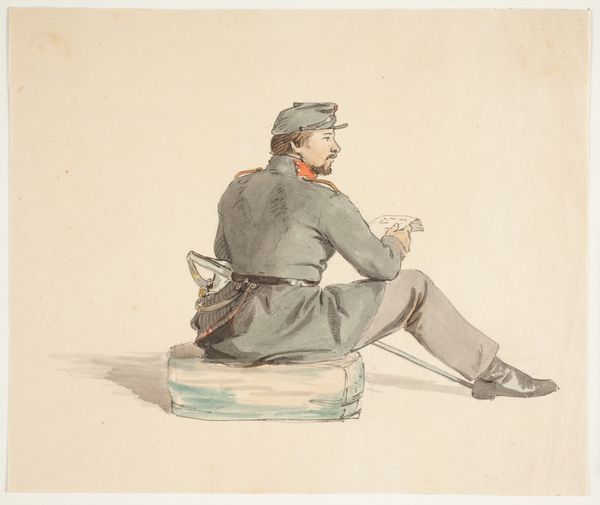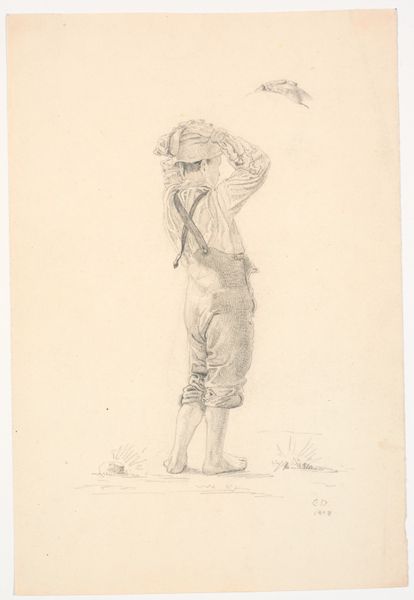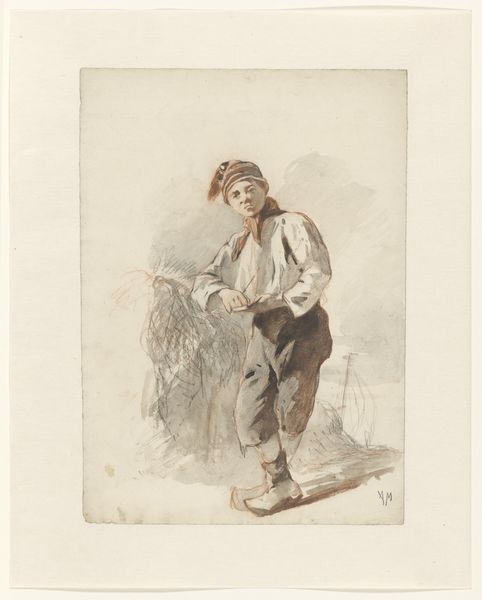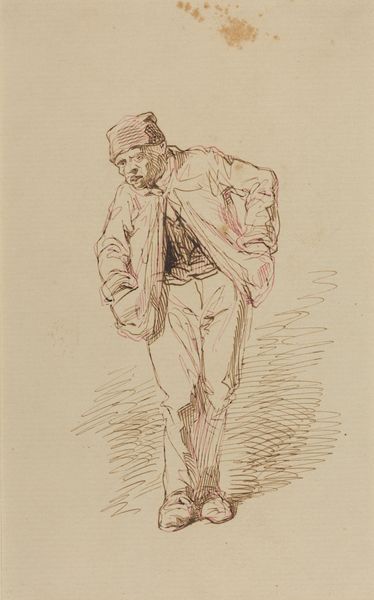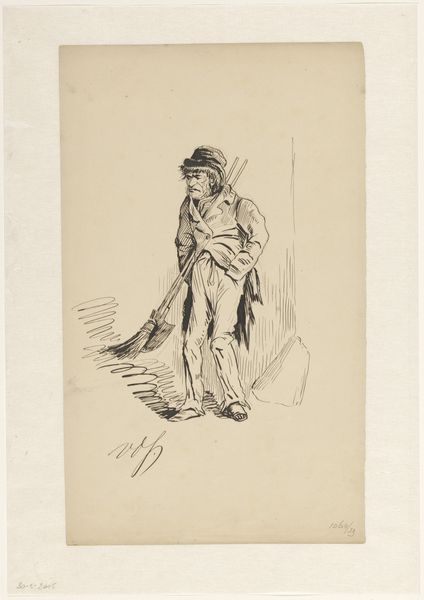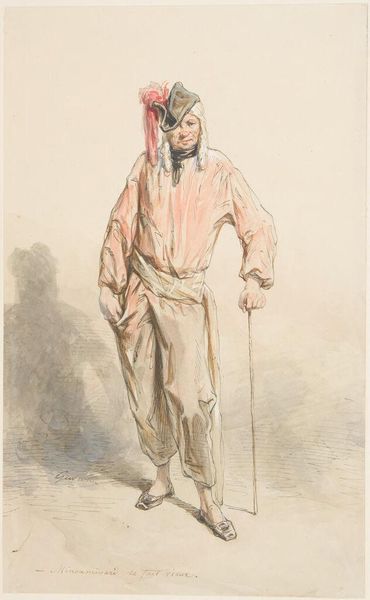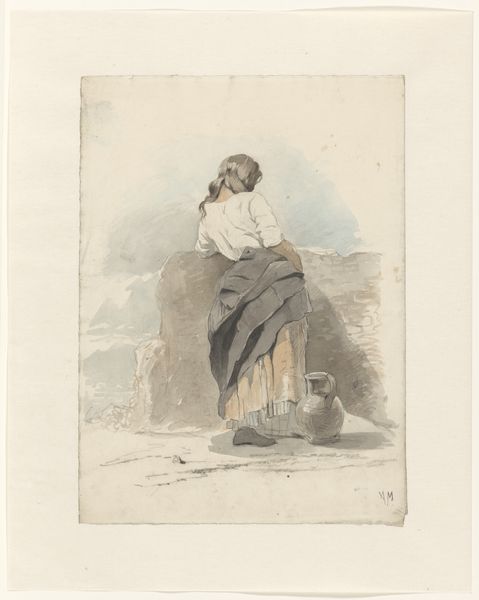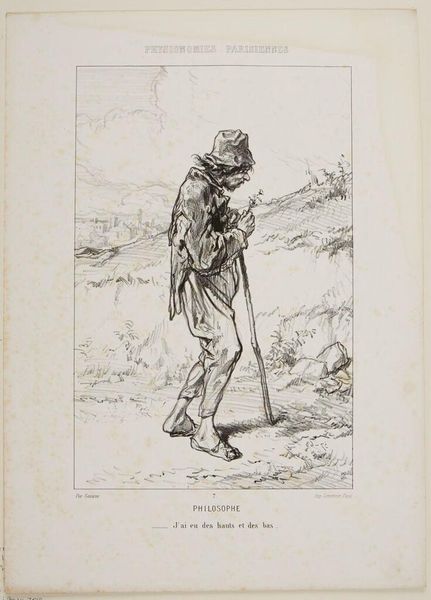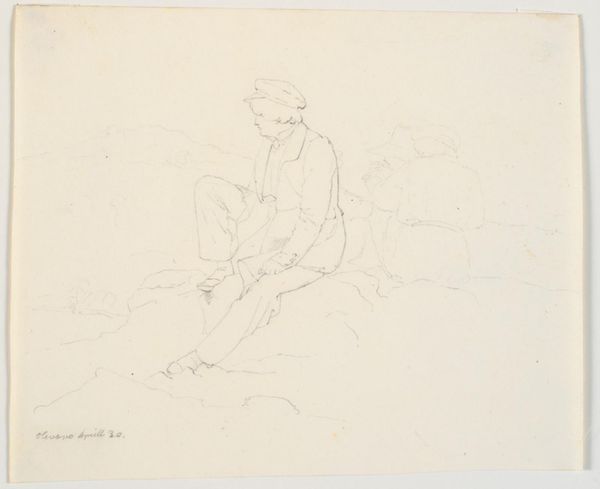
Dimensions: 32.5 x 22.5 cm
Copyright: Public domain
Curator: Here we have "A Sailor Standing on the Shore," a watercolor by Paul Gavarni, dating back to 1860. It's currently residing at The Metropolitan Museum of Art. What are your immediate thoughts on encountering this piece? Editor: A solitary soul, wouldn't you say? The palette feels…resigned. Earthy tones dominating, even the sailor's red sweater seems muted, like a whispered shout against the vast backdrop. He stands on the cusp, but to where, I wonder? The future, or just the relentless sea. Curator: Gavarni’s process involved capturing fleeting moments en plein air, which speaks to the burgeoning Realism movement. It emphasizes accessible themes through observation and documentation. The materials themselves, watercolor and paper, lend a sense of immediacy, capturing a specific moment of light and atmosphere in contrast to grand historical painting. Editor: The 'moment' is everything here. It's beautifully observed, all those watercolour washes capturing a weight on his shoulders, as if the very air is dampening his spirit. The visible brushstrokes make me consider its making. This is so raw; the human touch really resonates, unlike an oiled-up Academician gazing off at the horizon, chest puffed out! This feels like work, both for him and the artist. Curator: Absolutely. We see Gavarni engaging with contemporary issues and social types rather than idealized subjects. The "sailor" represents a specific class and occupation, grounding it in social reality and material conditions of labor. One wonders, what port of call is next, or whether the water reflects his own life course. Editor: Maybe it’s the very notion of being land-locked...The fellow's face is shadowed and it only adds to the mood. We're left contemplating not just the person, but the endless horizon of choices a sailor makes when they face forward like that. It isn't so obvious here... it hints a bigger story is taking place outside the page. Curator: I think your read touches on Gavarni's interest in encapsulating and understanding a critical part of life on the sea in 19th century. By emphasizing observation through process and by embracing ordinary workers and labor, this speaks more deeply of that reality. Editor: It’s more complex than it appears on the surface, wouldn't you agree? Thank you for shedding light on Gavarni's unique process, context, and choices; these all helped reveal it.
Comments
No comments
Be the first to comment and join the conversation on the ultimate creative platform.
